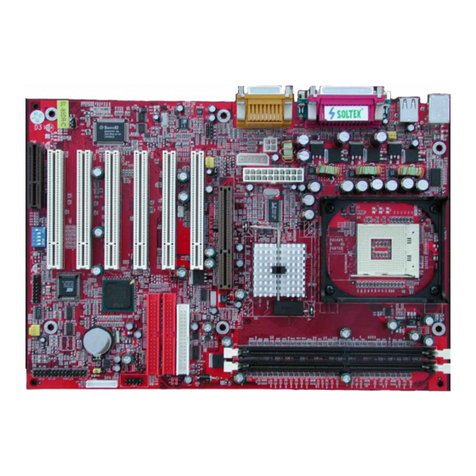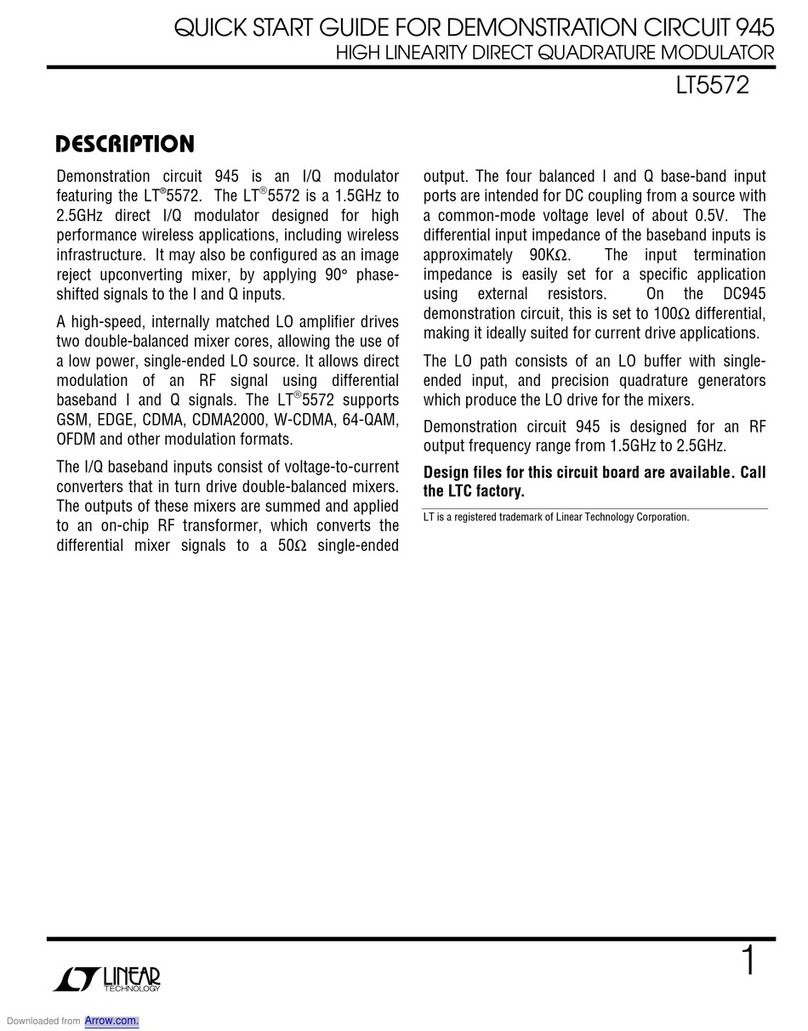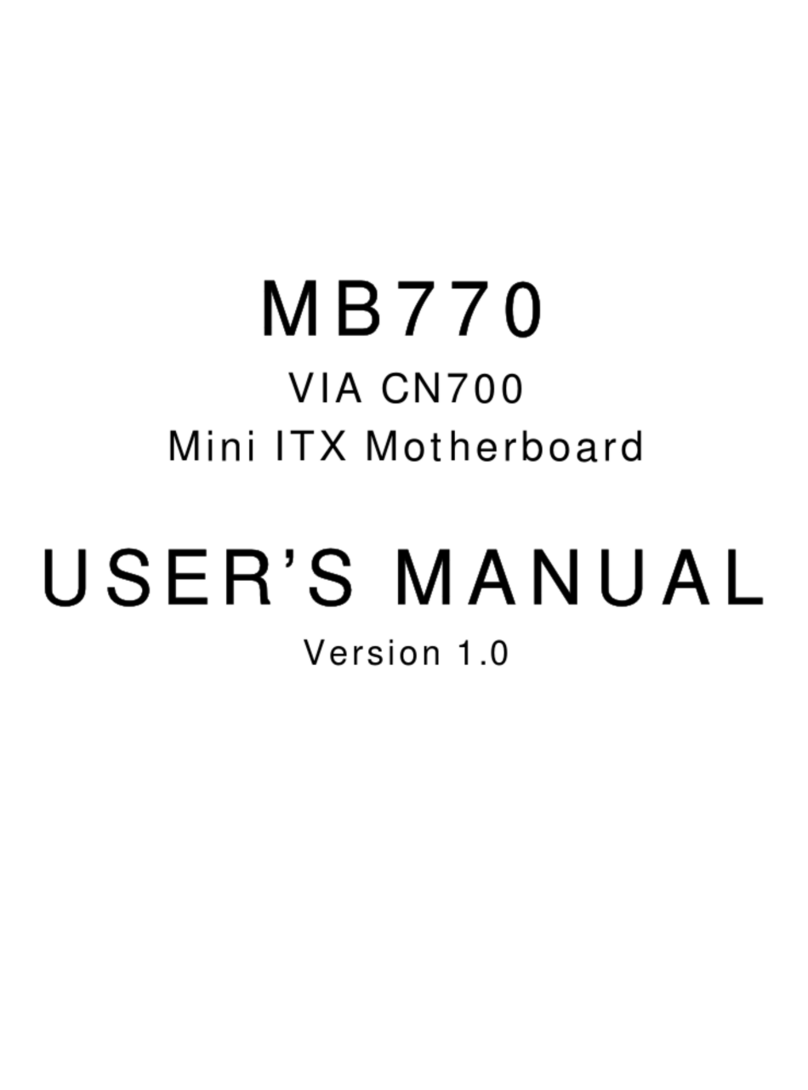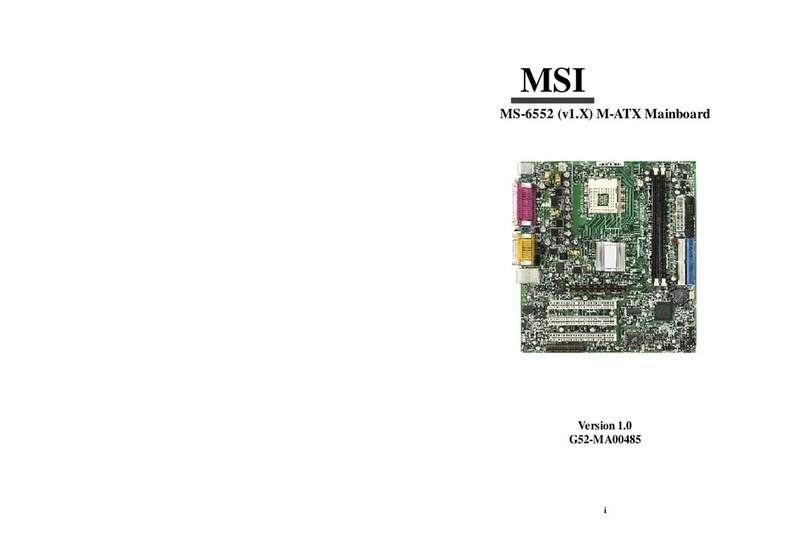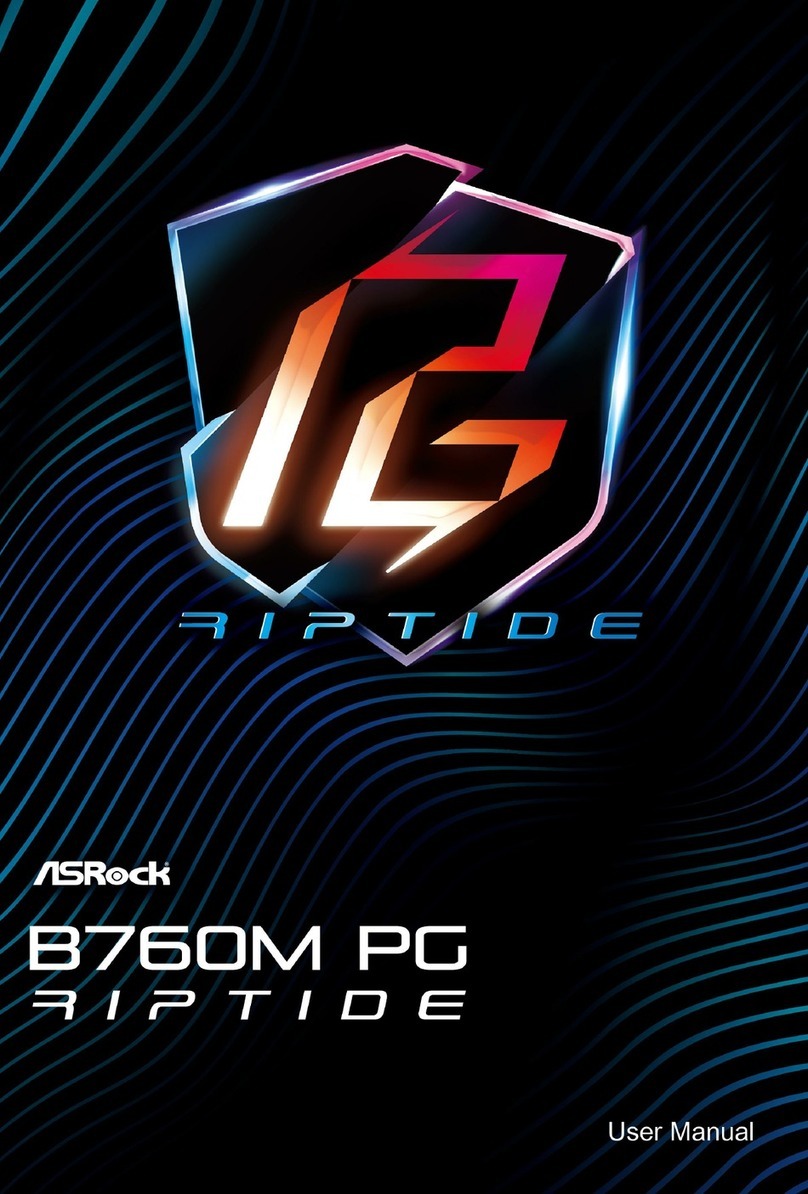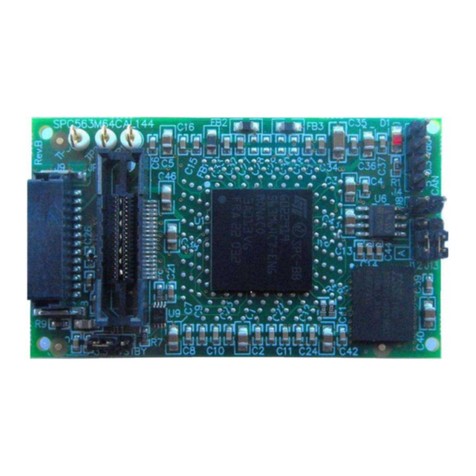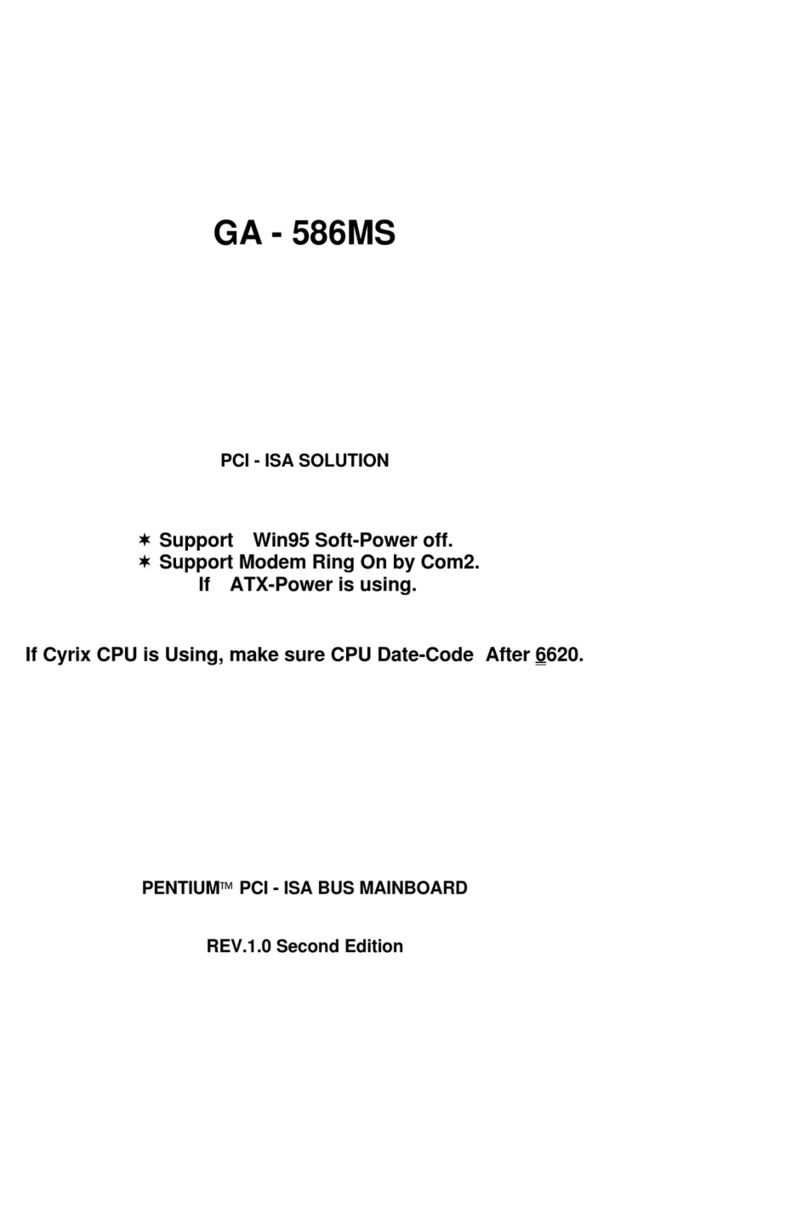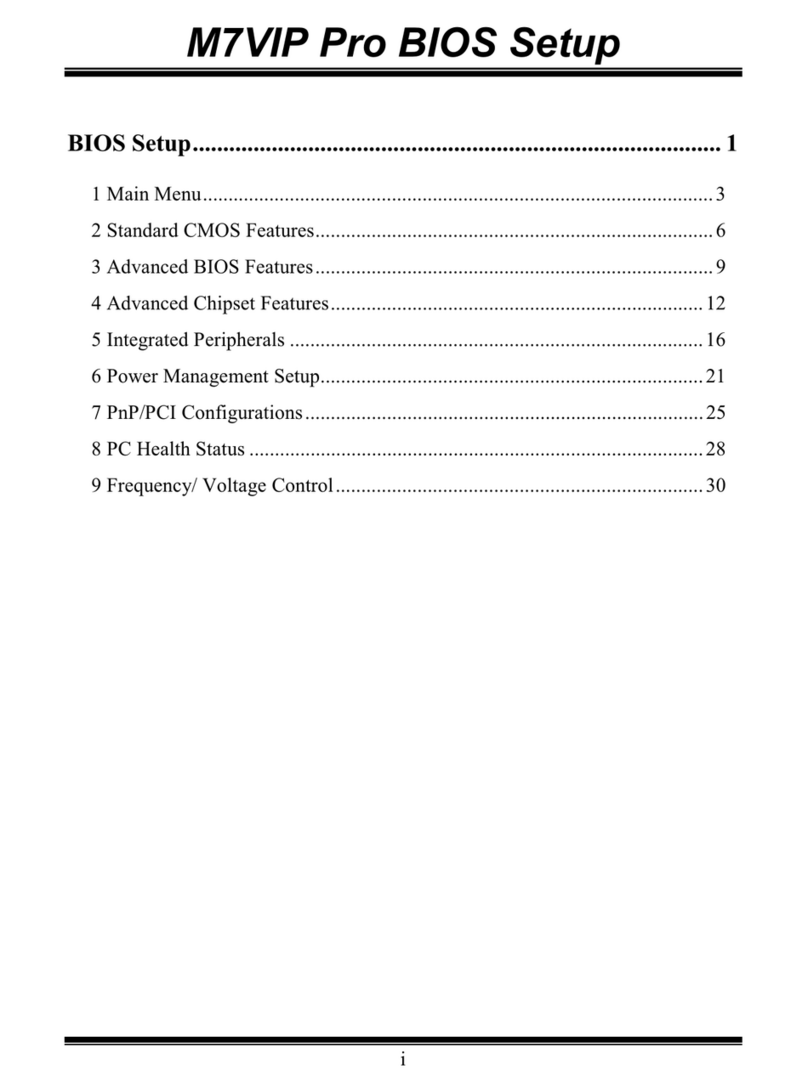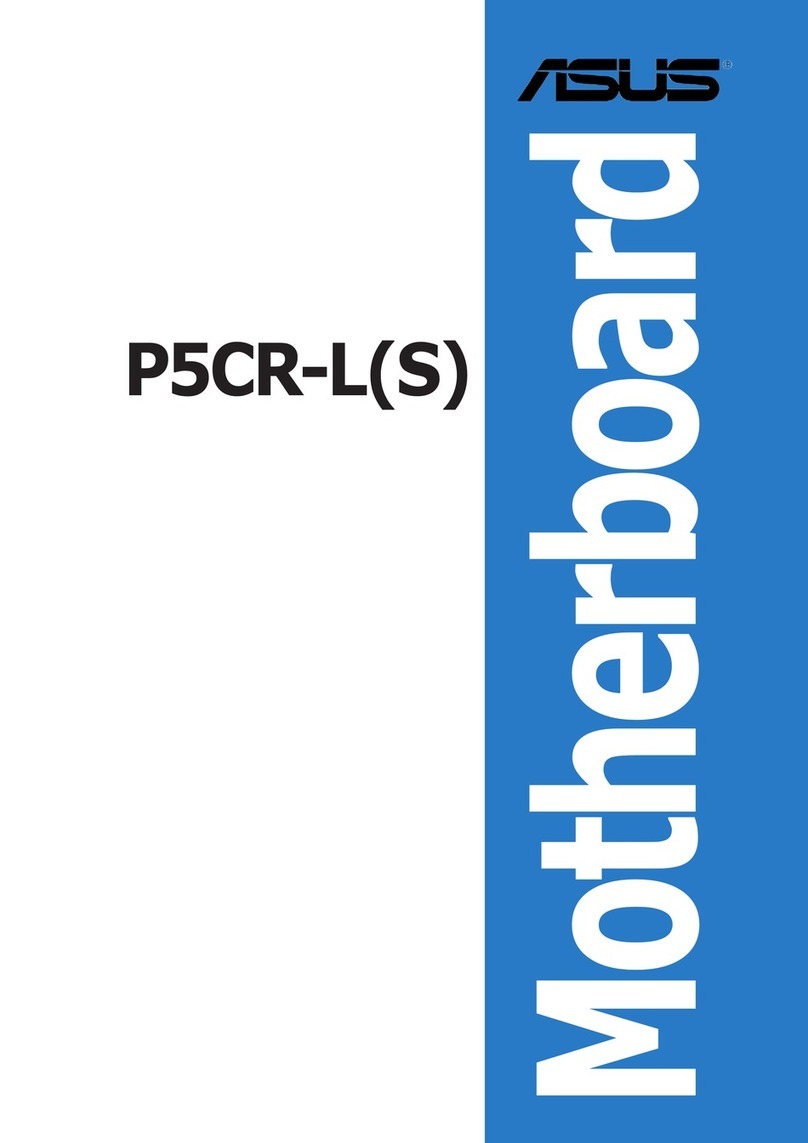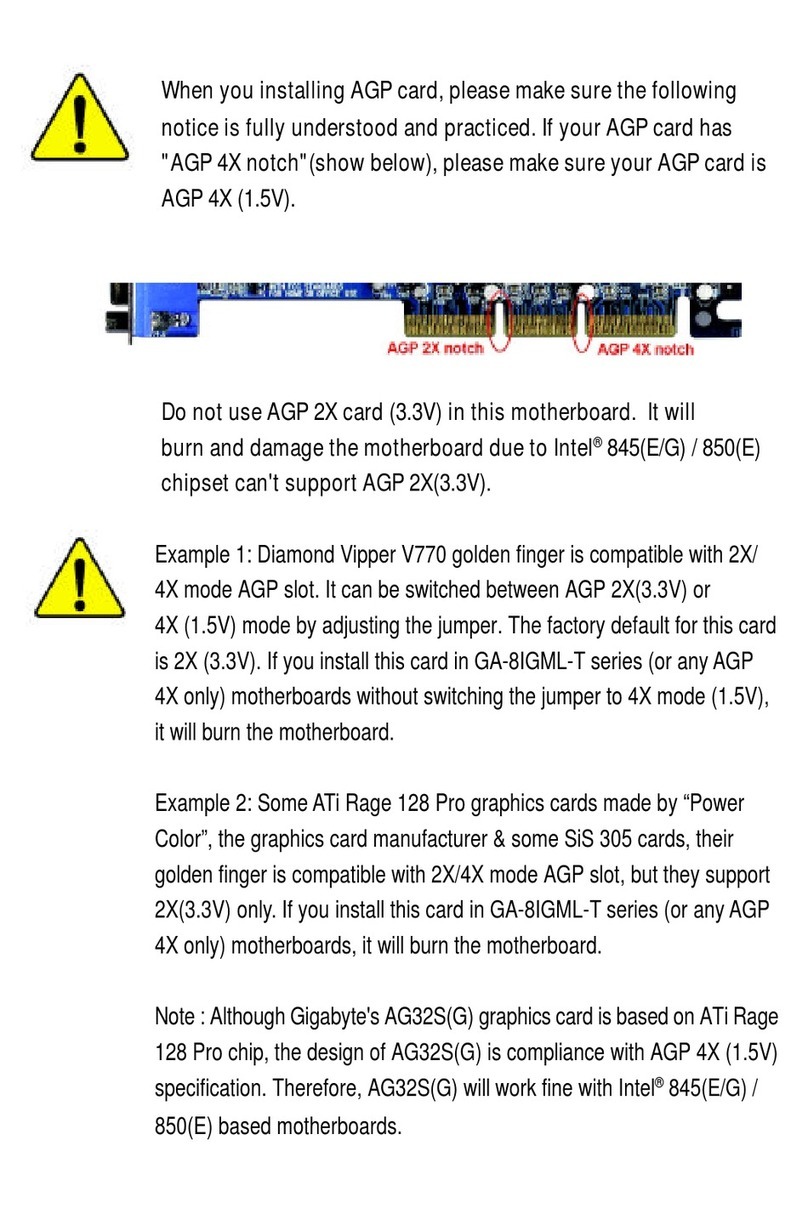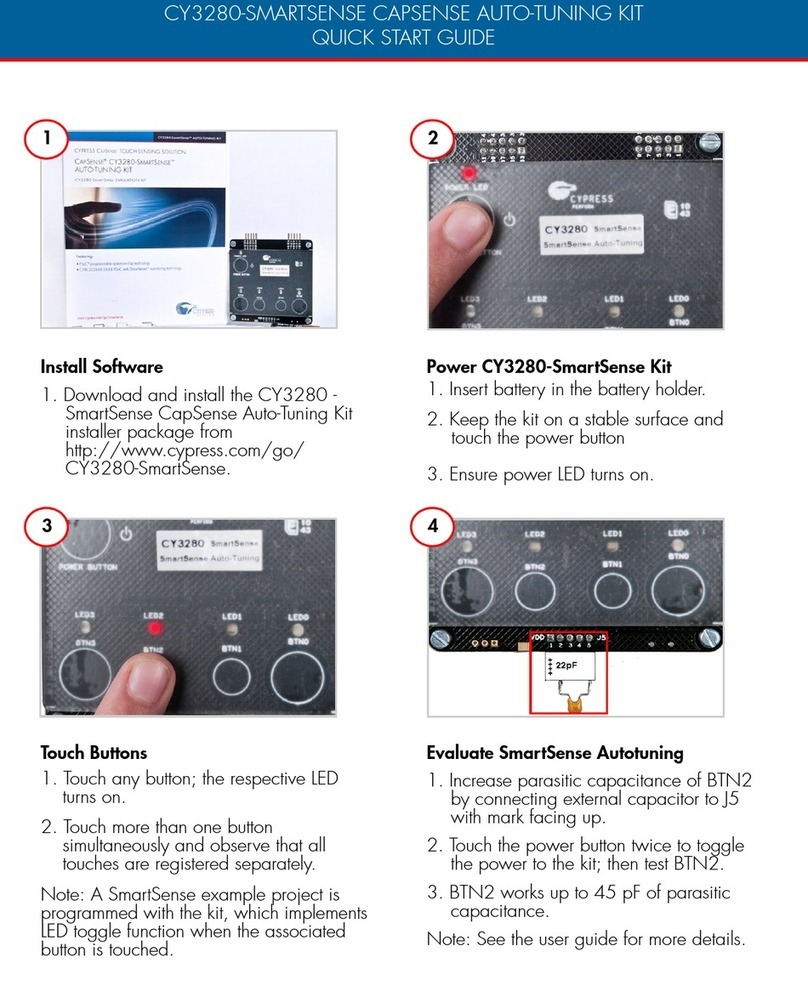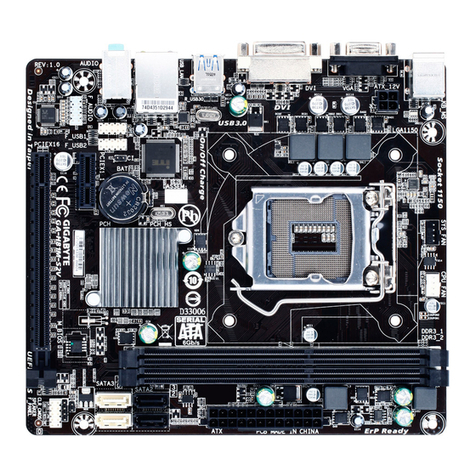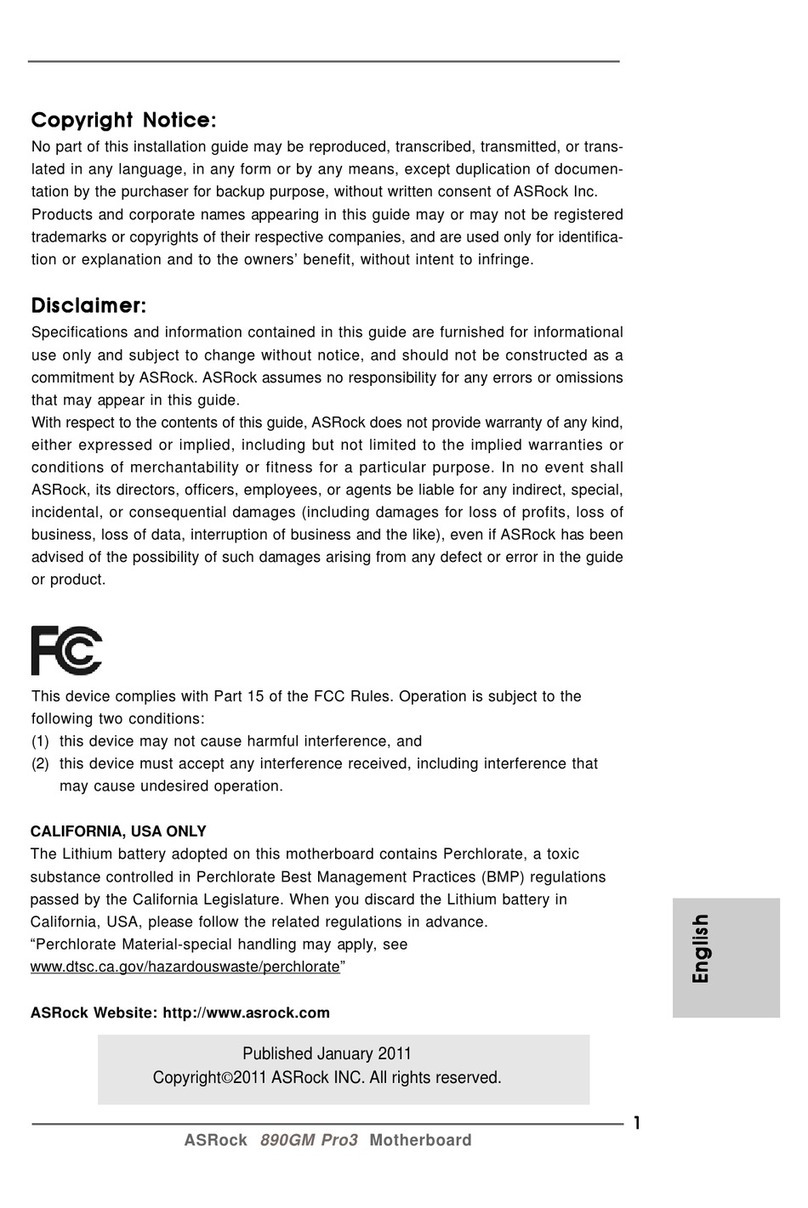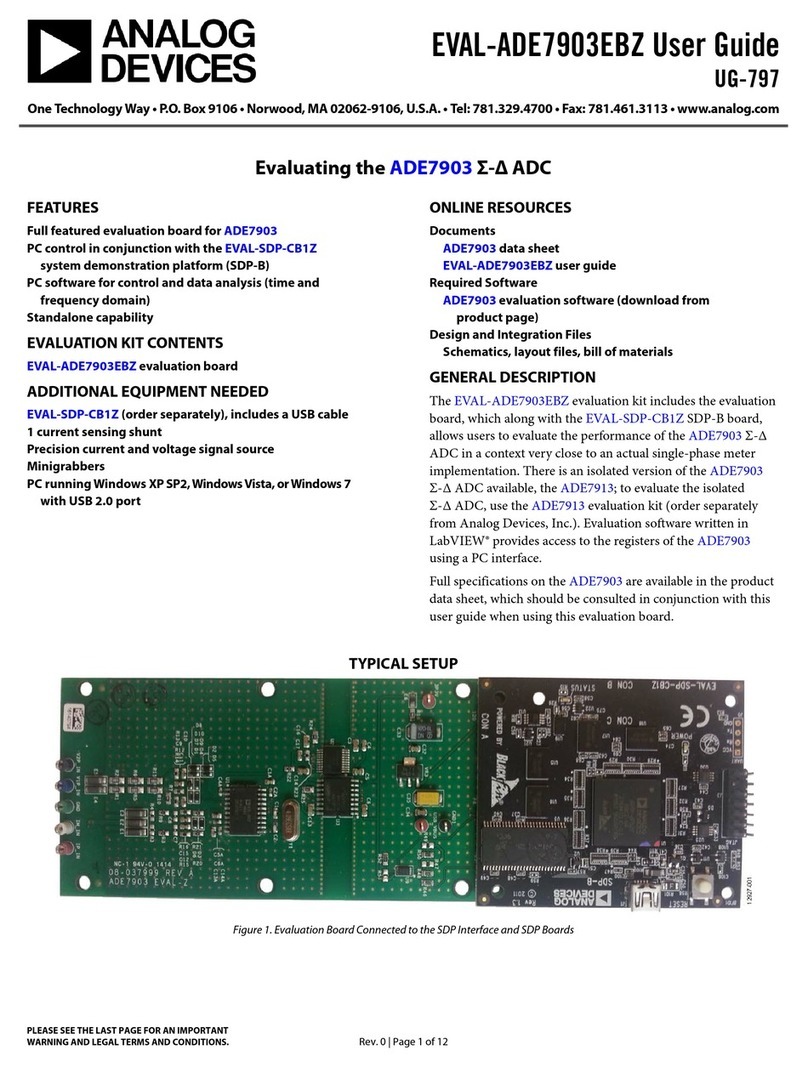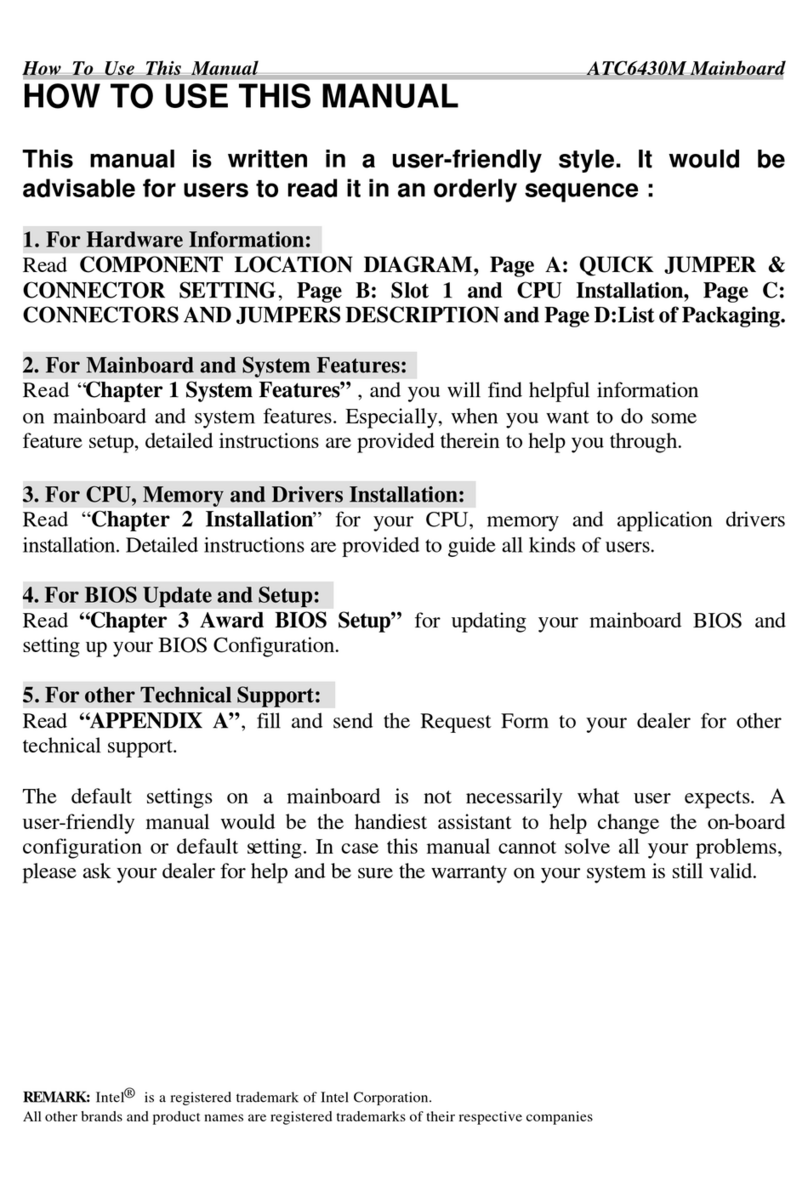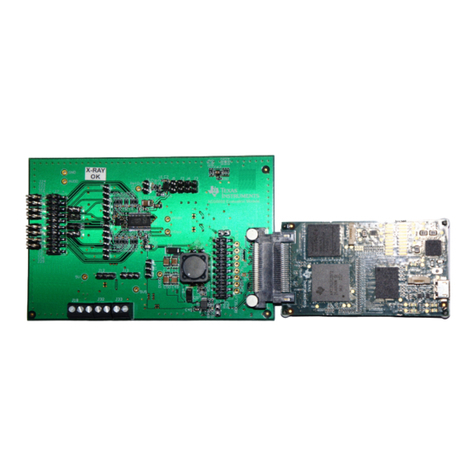Espressif ESP32-Ethernet-Kit User manual

ESP32-Ethernet-Kit V1.0 Getting Started Guide
This guide shows how to get started with the ESP32-Ethernet-Kit development board and also
provides informa on about its func onality and configura on op ons.
The ESP32-Ethernet-Kit is an Ethernet-to-Wi-Fi development board that enables Ethernet
devices to be interconnected over Wi-Fi. At the same me, to provide more flexible power
supply op ons, the ESP32-Ethernet-Kit also supports power over Ethernet (PoE).
What You Need
ESP32-Ethernet-Kit V1.0 board
USB 2.0 A to Micro B Cable
Computer running Windows, Linux, or macOS
You can skip the introducon secons and go directly to Secon Start Applicaon Development.
Overview
ESP32-Ethernet-Kit is an ESP32-based development board produced by Espressif.
It consists of two development boards, the Ethernet board A and the PoE board B, The Ethernet
board (A) contains Bluetooth / Wi-Fi dual-mode ESP32-WROVER-B module and IP101GRI, a
Single Port 10/100 Fast Ethernet Transceiver (PHY). The PoE board (B) provides power over
Ethernet funconality. The A board can work independently, without the board B installed.

ESP32-Ethernet-Kit V1.0
For the applicaon loading and monitoring the Ethernet board (A) also features FTDI FT2232HL
chip - an advanced mul-interface USB bridge. This chip enables to use JTAG for direct
debugging of ESP32 through the USB interface without a separate JTAG debugger.
Functionality Overview
The block diagram below shows the main components of ESP32-Ethernet-Kit and their
interconnecons.

ESP32-Ethernet-Kit block diagram
Functional Description
The following two figures and tables describe the key components, interfaces, and controls of
the ESP32-Ethernet-Kit.
Ethernet Board (A)
ESP32-Ethernet-Kit - Ethernet board (A) layout (click to enlarge)

4/10
The table below provides descripon starng from the picture’s top right corner and going
clockwise.
PoE Board (B)
This board coverts power delivered over the Ethernet cable (PoE) to provide a power supply for
the Ethernet board (A). The main components of the PoE board (B) are shown on the block
diagram under Funconality Overview.
The PoE board (B) has the following features:
Key Component Descripon
ESP32-WROVER-B This ESP32 module features 64-Mbit PSRAM for flexible extended storage and
GPIO Header 2 Five unpopulated through-hole solder pads to provide access to selected GPIOs
Flow Control A jumper header with access to the board signals. For details, see Flow Control.
Funcon Switch A DIP switch used to configure the funconality of selected GPIOs of ESP32. Fo
Tx/Rx LEDs Two LEDs to show the status of UART transmission.
GPIO Header 3 Provides access to some GPIOs of ESP32 that can be used depending on the po
FT2232 The FT2232 chip serves as a mul-protocol USB-to-serial bridge which can be p
USB Port USB interface. Power supply for the board as well as the communicaon interfa
Power Switch Power On/Off Switch. Toggling toward the Boot buon powers the board on, to
5V Input The 5V power supply interface can be more convenient when the board is oper
5V Power On LED This red LED turns on when power is supplied to the board, either from USB or
DC/DC Converter Provided DC 5 V to 3.3 V conversion, output current up to 2A.
Board B Connectors A pair male header pins for mounng the PoE board (B).
IP101GRI (PHY) The physical layer (PHY) connecon to the Ethernet cable is implemented using
RJ45 Port Ethernet network data transmission port.
Magnecs Module The Magnecs are part of the Ethernet specificaon to protect against faults an
Link/Acvity LEDs Two LEDs (green and red) that respecvely indicate the “Link” and “Acvity” sta
BOOT Buon Download buon. Holding down BOOT and then pressing CH_PU iniates Firm
CH_PU Buon Reset buon.
GPIO Header 1 This header provides six unpopulated through-hole solder pads connected to sp

https://docs.espressif.com/projects/esp-idf/en/latest/hw-reference/get-started-ethernet-kit.html 5/10
Support for IEEE 802.3at
Power output: 5 V, 1.4 A
To take advantage of the PoE funconality the RJ45 Port of the Ethernet board (A) should be
connected with an Ethernet cable to a switch that supports PoE. When the Ethernet board (A)
detects 5 V power output from the PoE board (B), the USB power will be automacally cut off.
ESP32-Ethernet-Kit - PoE board (B) layout (click to enlarge)
Setup Options
This secon describes opons to configure the ESP32-Ethernet-Kit hardware.
Function Switch
The funcons for specific GPIO pins can be selected with the Funcon Switch.
DIP SW GPIO Pin Pin Funconality if DIP SW is ON
1 GPIO14 Connected to FT2232 to provide JTAG funconality
2 GPIO12 Connected to FT2232 to provide JTAG funconality
3 GPIO13 Connected to FT2232 to provide JTAG funconality
4 GPIO15 Connected to FT2232 to provide JTAG funconality
5 GPIO4 Connected to FT2232 to provide JTAG funconality
6 GPIO2 Connected to on-board 25 MHz oscillator
7 GPIO5 Connected to RESET N input of IP101GRI
Key Component Descripon
Board A Connector Four female header pins for mounng this board onto Ethernet board (A).
External Power Terminals Oponal power supply to the PoE board (B).

DIP SW GPIO Pin Pin Funconality if DIP SW is ON
G O5 Co ected to S _ put o 0 G
8 n/a
You can make a certain GPIO pin available for other purposes by pung its DIP SW to the Off
posion.
Flow Control
This is a 2 x 2 jumper pin header intended for the UART flow control.
. Signal Comment
1 MTDO GPIO13, see also Funcon Switch
2 MTCK GPIO15, see also Funcon Switch
3 RTS RTS signal of FT2232
4 CTS CTS signal of FT2232
GPIO Allocation
This secon describes allocaon of ESP32 GPIOs to specific interfaces or funcons of the
ESP32-Ethernet-Kit.
IP101GRI (PHY) Interface
The allocaon of the ESP32 (MAC) pins to IP101GRI (PHY) is shown in the table below.
. ESP32 Pin (MAC) IP101GRI (PHY)
RMII Interface
1 GPIO21 TX_EN
2 GPIO19 TXD[0]
3 GPIO22 TXD[1]
4 GPIO25 RXD[0]
5 GPIO26 RXD[1]
6 GPIO27 CRS_DV
7 GPIO0 REF_CLK
Serial Management Interface

https://docs.espressif.com/projects/esp-idf/en/latest/hw-reference/get-started-ethernet-kit.html 7/10
. ESP32 Pin (MAC) IP101GRI (PHY)
8 GPIO23 MDC
9 GPIO18 MDIO
PHY Reset
10 GPIO5 Reset_N
Note
Except for REF_CLK, the allocaon of all pins under the RMII Interface is fixed and cannot be
changed either through IOMUX or GPIO Matrix.
GPIO Header 1
This header exposes some GPIOs that are not used elsewhere on the ESP32-Ethernet-Kit.
. ESP32 Pin
1 GPIO32
2 GPIO33
3 GPIO34
4 GPIO35
5 GPIO36
6 GPIO39
GPIO Header 2
This header contains the GPIOs with specific RMII funconality (except GPIO2). Depending on
the situaon, specific Ethernet applicaons might require this funconality.
. ESP32 Pin RMII Funcon Comments
1 GPIO17 EMAC_CLK_180 See note 1
2 GPIO16 EMAC_CLK_OUT See note 1
3 GPIO4 EMAC_TX_ER
4 GPIO2 n/a See note 2

. ESP32 Pin RMII Funcon Comments
5 GPIO5 EMAC_RX_CLK See note 2
Note
1. The ESP32 pins GPIO16 and GPIO17 are not broken out to the ESP32-WROVER-B
module and therefore not available for use. If you need to use these pins, please solder a
module without SPIRAM memory inside, e.g. the ESP32-WROOM-32D or ESP32-SOLO-
1.
2. Funconality depends on the sengs of the Funcon Switch.
GPIO Header 3
The funconality of GPIOs connected to this header depends on the sengs of the Funcon
Switch.
. ESP32 Pin
1 GPIO15
2 GPIO13
3 GPIO12
4 GPIO14
5 GND
6 3V3
GPIO Allocation Summary
ESP32-WROVER-B IP101GRI UART JTAG GPIO Comments
S_VP IO36
S_VN IO39
IO34 IO34
IO35 IO35
IO32 IO32
IO33 IO33
IO25 RXD[0]

Note
1. GPIO2 is used to enable external oscillator of the PHY.
2. GPIO0 is a source of 50 MHz reference clock for the PHY. The clock signal is first
inverted, to account for transmission line delay, and then supplied to the PHY.
3. To prevent affecng the power-on state of GPIO0 by the clock output on the PHY side,
the PHY external oscillator is enabled using GPIO2 aer ESP32 is powered up.
4. The ESP32 pins GPIO16 and GPIO17 are not broken out to the ESP32-WROVER-B
module and therefore not available for use. If you need to use these pins, please solder a
module without SPIRAM memory inside, e.g. the ESP32-WROOM-32D or ESP32-SOLO-
1.
ESP32-WROVER-B IP101GRI UART JTAG GPIO Comments
IO26 RXD[1]
IO27 CRS_DV
IO14 TMS IO14
IO12 TDI IO12
IO13 RTS TCK IO13
IO15 CTS TDO IO15
IO2 IO2 See notes 1 and 3 below
IO0 REF_CLK See notes 2 and 3 below
IO4 nTRST IO4
IO16 IO16 (NC) See note 4 below
IO17 IO17 (NC) See note 4 below
IO5 Reset_N IO5
IO18 MDIO
IO19 TXD[0]
IO21 TX_EN
RXD0 RXD
TXD0 TXD
IO22 TXD[1]
IO23 MDC

https://docs.espressif.com/projects/esp-idf/en/latest/hw-reference/get-started-ethernet-kit.html 10/10
Start Application Development
Before powering up your ESP32-Ethernet-Kit, please make sure that the board is in good
condi on with no obvious signs of damage.
Initial Setup
1. Set the Func on Switch on the Ethernet board (A) to its default posi on by turning all the
switches to ON.
2. To simplify flashing and testing the application, do not install any jumpers and do not
connect any signals to the board headers.
3. The PoE board (B) can now be plugged in, but do not connect external power to it.
4. Connect the Ethernet board (A) to the PC with a USB cable.
5. Turn the Power Switch from GND to 5V0 position, the 5V Power On LED should light up.
Now to Development
Proceed to Get Started, where Section Installation Step by Step will quickly help you set up the
development environment and then flash an example project onto your board.
Move on to the next section only if you have successfully completed all the above steps.
Configure and Load the Ethernet Example
Aer se ng up the development environment and tes ng the board, you can configure and flash
the ethernet/ethernet example. This example has been created for tes ng Ethernet func
onality. It supports different PHY, including IP101GRI installed on ESP32-Ethernet-Kit V1.0
board.
Table of contents
Other Espressif Motherboard manuals
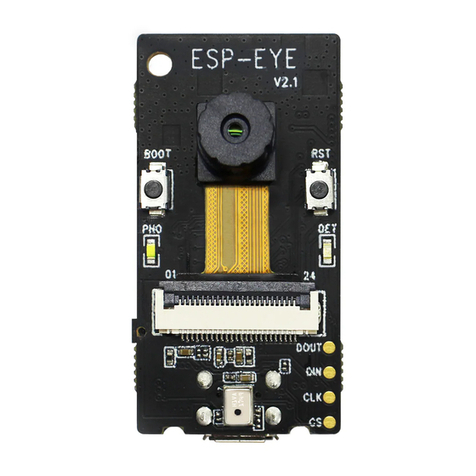
Espressif
Espressif ESP-EYE V2.1 User manual
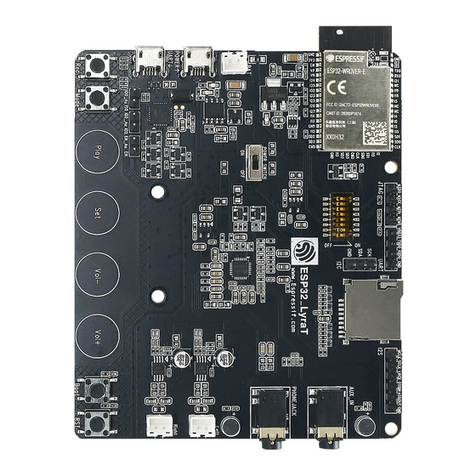
Espressif
Espressif ESP32-LyraT Operator's manual
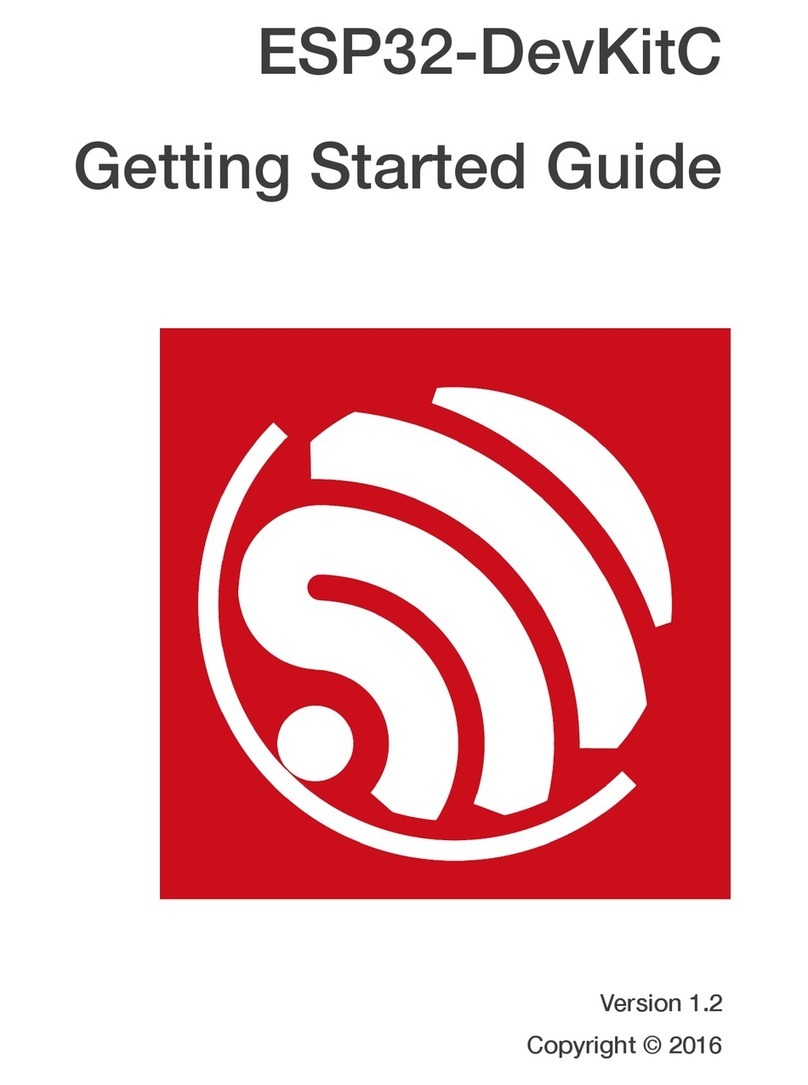
Espressif
Espressif ESP32-DevKitC User manual
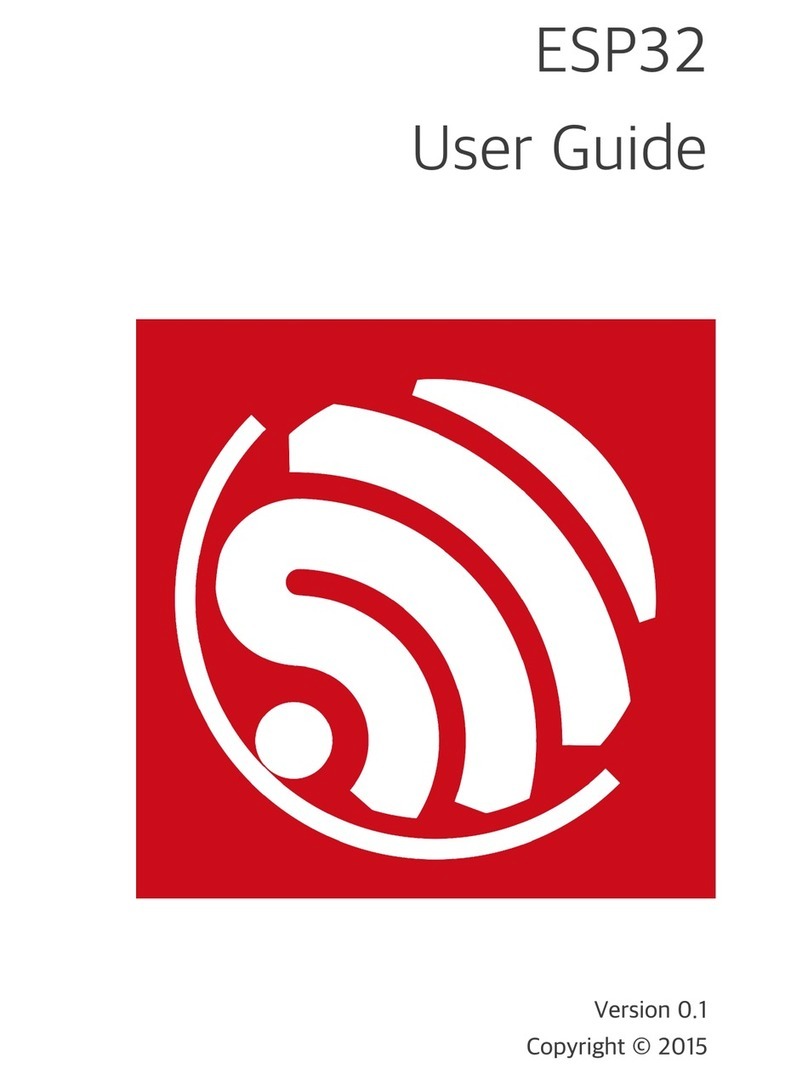
Espressif
Espressif ESP32 User manual
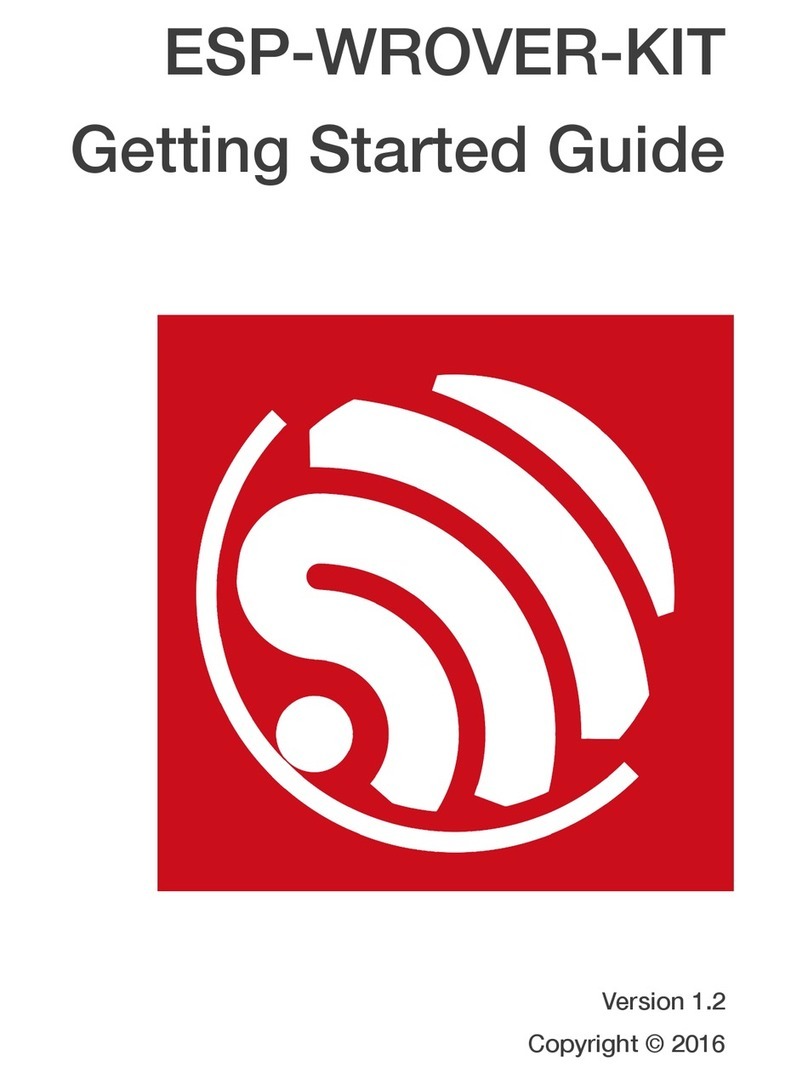
Espressif
Espressif ESP-WROVER-KIT User manual
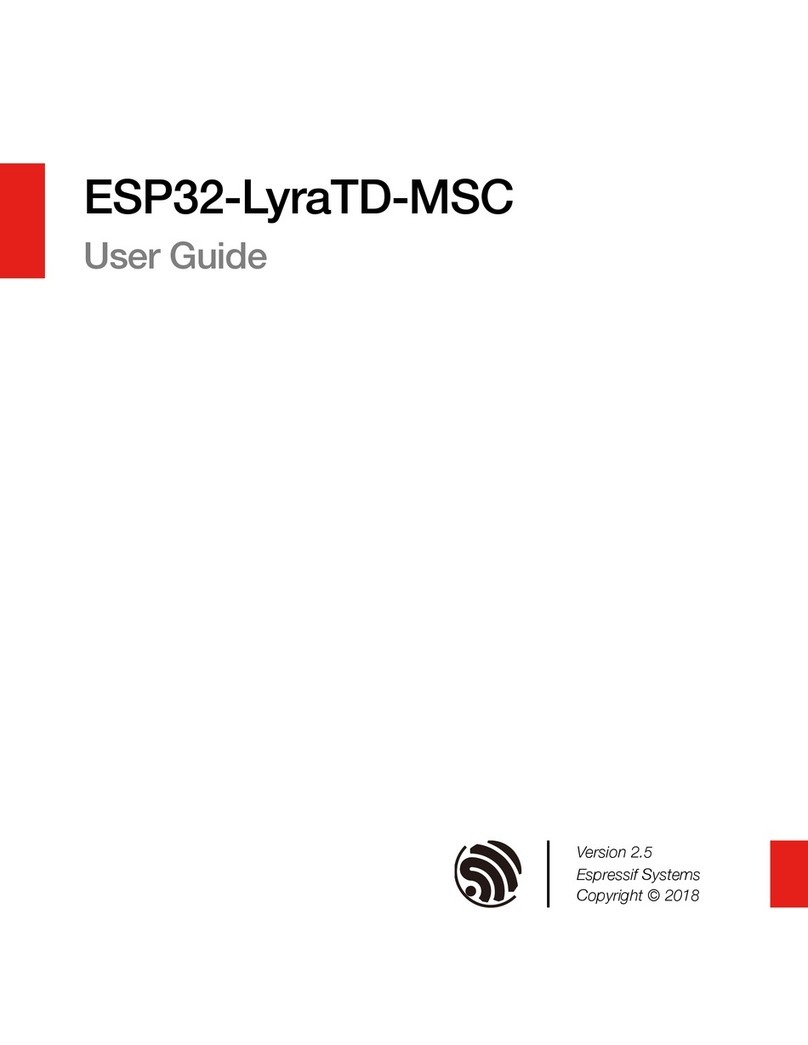
Espressif
Espressif ESP32-LyraTD-MSC User manual
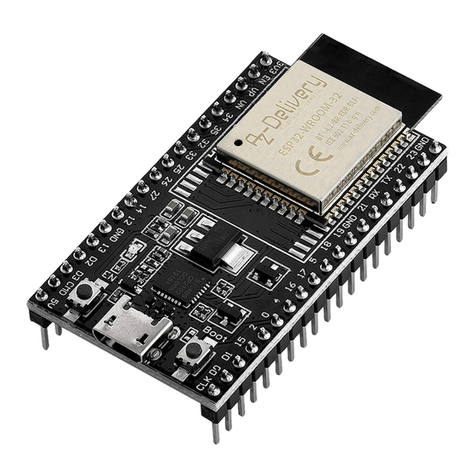
Espressif
Espressif ESP32-DevKitC V4 User manual

Espressif
Espressif ESP32-C3-DevKitM-1 User manual
